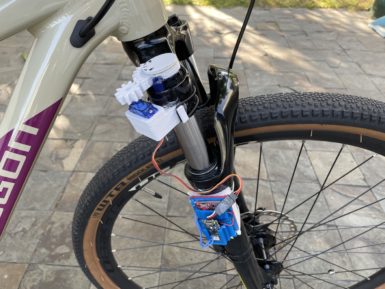
Overview
Creoqode Lyra is a handheld game console.
Powered by Raspberry Pi CM3L (Compute Module 3 Lite), Lyra will be your game console, personal computer and entertainment system at the same time.
Lyra brings all the history of video gaming in the palm of your hands. It can virtually emulate any game console of the classic era, making it possible for you to carry hundreds of them in your pocket. You can play your all-time favourite video games whenever you want, wherever you want.
Powered by Raspberry Pi CM3L (Compute Module 3 Lite), Lyra will be your game console, personal computer and entertainment system at the same time.
You can connect Lyra to a TV via HDMI and enjoy your favourite video games on a larger screen with friends. Additional controllers can be added via the USB port.
Lyra is also your personal computer. You can surf on the internet, send emails, watch movies or even learn about coding. Simply connect a mouse and keyboard to Lyra and enjoy your portable PC on the go! It is a great gadget for makers and tinkerers too. You can access Raspberry Pi CM3L through the exposed GPIO pads and create amazing projects! You can connect up to 8 sensors or electronic gadgets to Lyra and add new functionalities.
Lyra is provided with a comprehensive tutorial series guiding the user about hardware, software and assembly. These tutorials explain in detail how to assemble Lyra, how to install your preferred OS, and how to download and run video games.
Take your entertainment to the next level.
Tech specs
| SOC | Broadcom BCM2837B0, Cortex-A53 (ARMv8) 64-bit SoC |
| CPU | 1.4GHz 64-bit quad-core ARM Cortex-A53 CPU |
| RAM | 1GB LPDDR2 SDRAM |
| Display | 5" TFT LCD 800 x 480 Resolution |
| Video | DPI Interface & HDMI |
| Audio | Integrated Speaker, 3.5 mm Audio Output & HDMI |
| USB | Micro USB 2.0 |
| Memory | 16 GB Micro SD Card. Upgradable to any memory size. |
| Battery | 3000 mAh LiPo |
Get Inspired
Arduino based bicycle movement sensor and GPS tracker.

… magnetic reed switch, but building the game himself in Unity. He had to construct and animate models for himself, the bike, and the scenery. After adding an AI and ranking system to the game, he was able to successfully race within the virtual environment on a real bike. Responsive LED system Motivated by the desire for a more advanced lighting system while on her nighttime bike rides, Natasha (TechnoChic) decided to affix strips of NeoPixel LEDs all over her bike that could react to music in real-time. The LEDs are controlled by an Arduino Nano 33 IoT that is, in turn, connected to her boombox via a 3.5mm audio jack for reading the audio signal. Two additional Nano 33 IoT boards were used for the wheels, along with more NeoPixels and batteries for each. GPS tracker Bicycle theft has been rapidly increasing over the last couple of years, which is why being able to recover a stolen bike has become vital. Johan’s bike tracker project contains an Arduino MKR GSM 1400 which reads motion data from an IMU and uses it to determine if the bike has moved when it is not supposed to. Once movement is detected, the board reads GPS data from a MKR GPS Shield and sends it over an LTE data connection in real-time so that the bike can be found. Integrated safety features The majority of mountain bikes lack useful safety features such as integrated lights, turn signals, and speed tracking, which is why Collin Wentzien embarked on his “(not so) electric bike” project. He built a series of features, including automatic brake/turn lights, a headlight, and an electronic horn with the goal of improving safety. Furthermore, his bike also got a bike computer upgrade which contains an Arduino Mega, GPS module, and dual screens for displaying relevant telemetry data. Speedometer display After losing the display unit for her bike computer, Element14 Presents host Katie wanted to replace it with a DIY version that tracked the current speed












